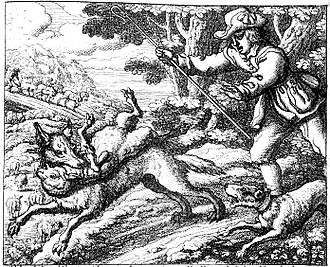The Shepard & The Wolf
Illustrates Trust, Psychological Safety, Communication Patterns
Trust is the foundation of any Agile environment. Without it, transparency breaks down, feedback loops collapse, and the cycle of improvement stops. But trust is not just about honesty. It is also about consistency, credibility, and emotional safety.
The classic Aesop fable of The Shepherd and The Wolf 1(aka, The Boy Who Cried Wolf) serves as a powerful metaphor for understanding how trust is built, and how quickly it can be lost.

Once there was a young shepherd who watched over a small flock near a quiet village. The work was simple but lonely, so one day, out of boredom, he shouted, "Wolf! A wolf is attacking the sheep!"
The villagers came running with sticks and tools, only to find the sheep calmly grazing and the shepherd laughing. "I fooled you," he said.
The villagers grumbled and returned to their work.
A few days later, the boy cried "Wolf!" again. The villagers rushed back. Again, there was no wolf. Again, the boy laughed.
But one evening, as the sun dipped behind the hills, a real wolf crept from the woods. The shepherd screamed, "Wolf! Please help!"
No one came.
By the time the villagers arrived the next morning, several sheep were gone. The boy sat weeping. "Why didn't you believe me?" he asked.
An elder replied quietly, "We believed you the first time."
Lessons Learned
Trust Is Earned Through Consistency
The villagers responded when they trusted the shepherd's word. But once he used his voice for entertainment instead of truth, his credibility disappeared. In Agile teams, trust is not built by promises. It is built by reliable actions over time. When leaders say they support experimentation but punish failure, trust erodes. When teams commit but do not deliver or hide blockers, trust fractures. Every interaction becomes a vote for or against credibility.
False Alarms Weaken the System
When everything feels like an emergency, nothing gets taken seriously. The boy's repeated false alarms trained the villagers to ignore real danger. Agile teams face the same risk when velocity is inflated, metrics are manipulated, or retrospectives become empty rituals. Over time, people stop paying attention. Urgency should be real and infrequent.
Psychological Safety Depends on Mutual Respect
The villagers stopped helping not out of cruelty, but out of self-protection. They had been manipulated. Psychological safety depends on people using their voices with care and receiving respect in return. When team members feel mocked, ignored, or punished for raising concerns, they stop speaking up. That silence becomes dangerous.
Accountability Requires Courage
The boy lied, but he also had to face the consequences. Accountability in Agile is not about blame. It is about owning outcomes, learning from them, and making things right. Leaders should model this by acknowledging their mistakes and inviting feedback. Without accountability, growth and improvement become impossible.
Repair Is Harder Than Prevention
Once trust is broken, restoring it takes far more time and effort than maintaining it in the first place. The shepherd could not undo the damage. Agile coaches should remind teams that every small betrayal, whether it is a missed Retrospective, hidden work, or hollow promises, adds up. Preventing harm is easier than rebuilding after it happens.
Coaching Tips
- Use this Parable in Trust-Building Workshops: Invite team members to reflect on times when trust was earned or broken, and what helped or hurt in those situations.
- Apply the Story When Co-Creating Team Agreements: Include explicit examples of behaviors that build or damage trust, and use the parable to give them real weight.
- Frame Metrics and Messaging with Care: Leaders can use this story to explain why exaggerating results or overpromising delivery undermines credibility with stakeholders.
- Reinforce Retrospectives as Safe Spaces: If a team seems guarded, this story can help open conversations about psychological safety and how to rebuild it when it has been lost.
Trust is the soil in which agility can grow. It cannot be forced or faked. It must be nurtured through honest conversation, consistent behavior, and mutual care. When teams protect and reinforce trust, by speaking truthfully, showing up dependably, and listening with respect, they create an environment where learning and value can flourish.
If you want agility to last, build trust first. Everything else stands on that ground.


